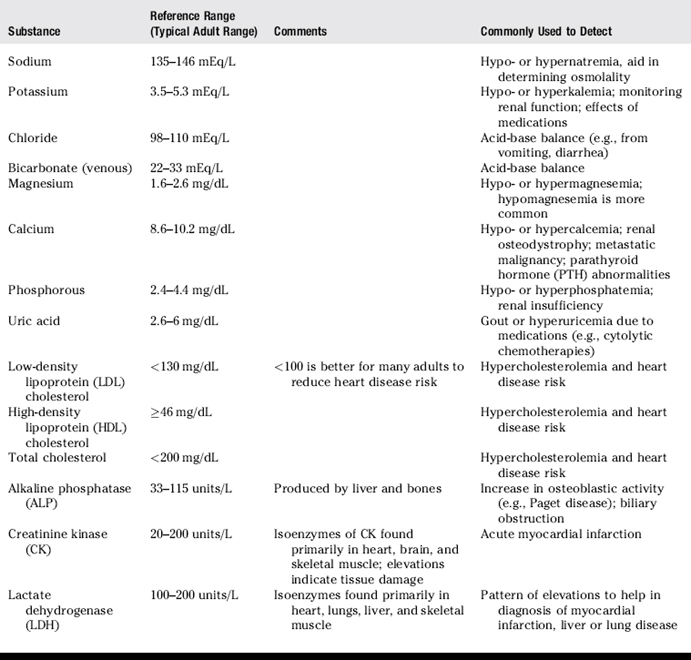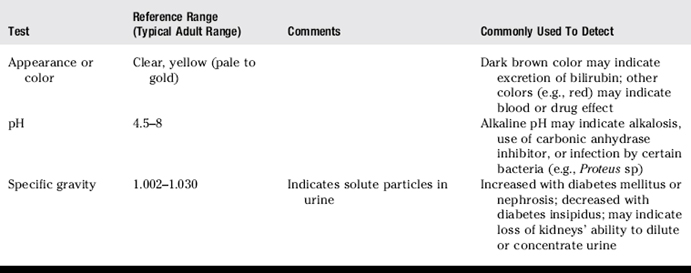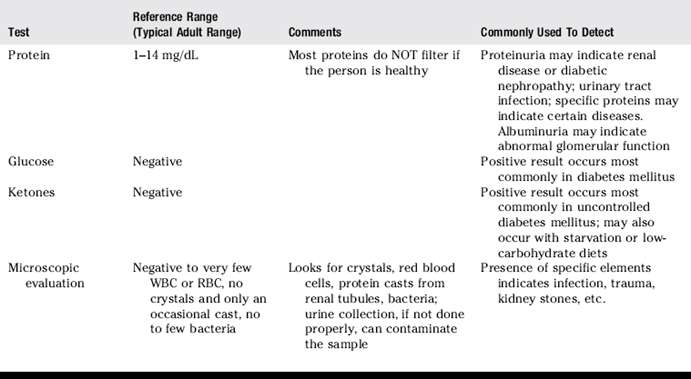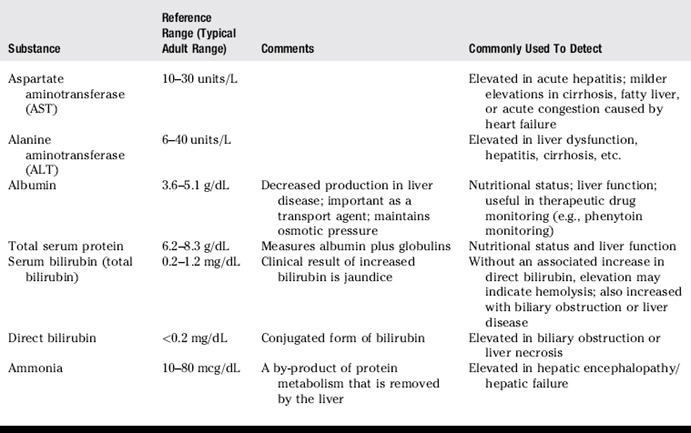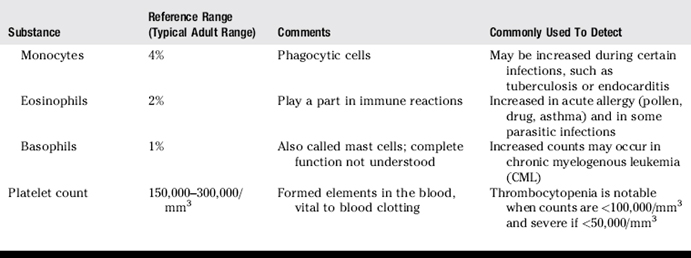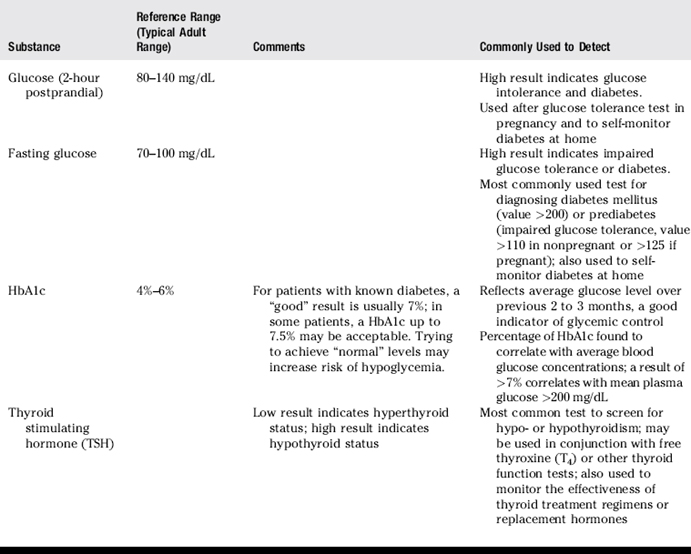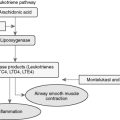CHAPTER 8 Laboratory Tests
I. Introduction
A. Laboratory tests are of two main types:
B. It is important for the pharmacist to have a strong knowledge of the more common laboratory tests used to guide patient diagnosis and treatment. Pharmacists are likely to review laboratory tests to assess the efficacy and the safety of medications. They may recommend testing when necessary or may be called to help interpret the results obtained from such tests. A pharmacist may be asked to help a patient understand the results of a particular test.
II. The International System of Units (SI), Conventional Units of Measure, and the Reporting of Laboratory Results
A. Around the world, laboratory tests are reported in the SI units, which are based on standard metric measurements. The United States has yet to fully adopt this system, and laboratories typically report results in traditional, customary units as well as the SI units. The reporting of both types of units typically aids communication among health care professionals of different training backgrounds or nationalities.
B. “Normal” laboratory results usually fall within a reference range of values determined by taking the usual measurements of that test found within a set and defined population of healthy individuals. For qualitative tests, results are often reported as either positive or negative for a specific finding. Quantitative tests are usually reported in terms of a reference range. For most tests, the reference range is statistically determined by the mean value plus two standard deviations. Values that fall out of the reference range or expected result are sometimes labeled “abnormal.” A value that falls outside an accepted range does not necessarily indicate the need for treatment or a need to make the value “normal.” An “abnormal” result requires interpretation in the context of the patient’s demographics, overall health status, medical examination findings, symptoms, timing and conditions of the test, and other relevant factors. A test may not produce results consistent with the results expected, and a repeat test may be needed to rule out errors in collection or processing of the test.
III. The Most Common Laboratory Tests Pharmacists Should Know (Tables 8-1 through 8-6)
A. The following sections will provide a brief synopsis and review of laboratory testing familiar to the pharmacist, including the common medical reasons the tests are monitored. The lists are not inclusive, but are representative of the tests pharmacists are most likely to encounter in their general clinical practices.
Lee M. Basic skills in interpreting laboratory data, ed 4, Bethesda: American Society of Health-Systems Pharmacists, 2009.
Wu A. Teitz clinical guide to laboratory tests, ed 4, Philadelphia: Saunders, 2006.
Clinical Pharmacology. Tampa: Resource Center, Lab Reference Values, Gold Standard, Inc, 2009. [database online] http://www.clinicalpharmacology.com Accessed July 16, 2009
REVIEW QUESTIONS
(Answers and Rationales on page 337.)
1. A clinical coordinator at the local hospital is looking for appropriateness of tobramycin therapy in her institution via drug utilization review (DUR). In addition to the serum drug concentration trends in the reviewed patient records, what other laboratory tests would be helpful?
2. A 56-year-old man with type 2 diabetes mellitus goes to the pharmacy to refill prescriptions after his 6 month physician visit. He is grumbling about taking his medications and explains that his “A1c” was “too high.” Now he has to take an additional medication. He asks the pharmacist “What is so important about that A1c anyway?” What is the best response?
3. A young woman presents to the emergency department with fever, pain in her chest, and a purulent cough. She is a poor historian of health problems. She has a small cut on her lower leg that is red but not oozing. There are decreased breath sounds at the base of the right lung. A chest x-ray result is pending. Her white blood cell (WBC) differential reveals:
4. Which of the following laboratory tests would be helpful in the diagnosis of myocardial infarction?
5. A 35-year-old woman has been maintained on 50 mcg per day of levothyroxine, with a normal TSH of 2 mIU/L; she is monitored every 6 months and has been stable for several years on this dosage. Recently, she is complaining of weight gain, fatigue, hair loss, and sensitivity to cold. A check of her TSH reveals a result of 10 mIU/L. She appears to have no other symptoms or findings on exam. A careful review of medications and recent changes in health habits reveals that she is now taking a multivitamin with minerals every morning, which she began 2 months ago. What is the best approach at this time?

